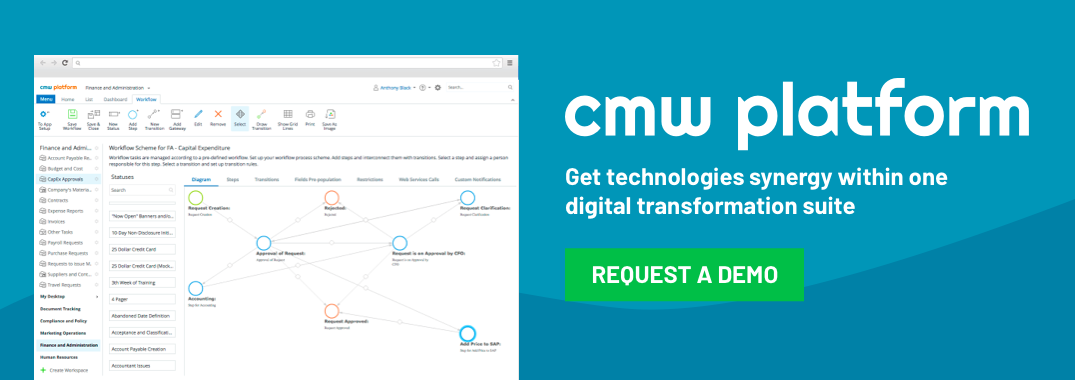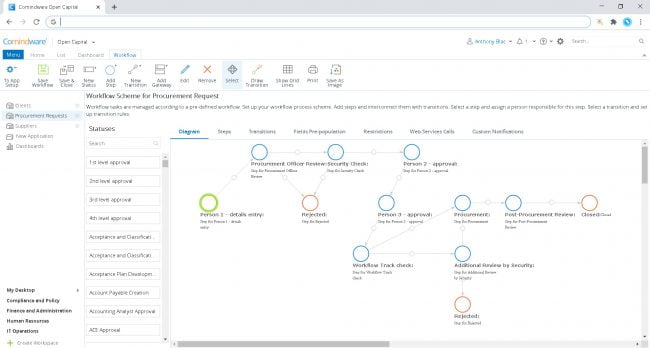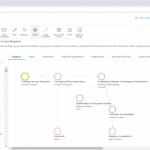How to Write a Winning Workflow Process
Tuesday, April 13, 2021
Workflow processes can really help you improve and streamline many aspects of your business. There are great software suites that can help you create a well-crafted workflow, including Comindware’s workflow software, but it will still require you to understand what a workflow is and how to write a quality workflow for your business.

What is a Workflow?
A workflow is just a step-by-step rendering of the steps involved in a given process. It is a way to map out the steps that are required to complete a given task most efficiently. What will be involved in your workflow will depend on the type of business you are in.
Though at first blush, this might seem like a waste of time, it actually turns out to be incredibly important and can make a world of change in the efficiency your business operates. Most of us take part in creating workflows, even if we don’t realize it. Any time we look at a process and break it down into its constituent steps, we are creating a mental workflow. Creating an actual workflow will give you a visual way to ensure consistency in the process and to find ways that you can improve the workflow to be more streamlined and logical.
How to Write A Winning Workflow
Not all workflows are straightforward like opening a door and walking through it. Many of the processes we use in business are complicated and have many steps and substeps. When writing a workflow, you want to focus on the three main issues: what, who, and how.
- What. This is where you determine what is being done. What job or task are you creating a workflow for? What other departments, stakeholders, or dependencies may be involved with this workflow that you will need to include.
- Who. Next, you will need to define the responsible parties. There may be multiple departments or people who are involved in a given step in the process. Make sure you know all of the parties that will need to be involved in a process.
- How. After you know what you are creating a workflow for and who is involved in each step in the process, it is time to move to the how. This will include how long it will take the project to get done, as well as how you will actually go about achieving the said end goal.
By focusing on these three main steps, you have the beginnings of a solid workflow. It is imperative that you have a clear understanding of the what, who, and how if you want to create a useful workflow that will help improve the efficiency, productivity, and improvement in your company. Whether you do this manually or you use workflow software, it can really show you places where you can improve the process or areas that may need more focus. It can also help to ensure consistency as everyone involved can have access to the standardized workflow which shows them the processes and steps that are entailed in a given process. This can also really help streamline and improve workflow.
 Visual workflow designer built-in Comindware Tracker makes it easy to design your winning workflows.
Visual workflow designer built-in Comindware Tracker makes it easy to design your winning workflows.With a good workflow, you can see an improvement in your processes. Since everyone has a consistent understanding of processes, all parties know what to do and there is no guesswork involved.
Responsibilities are also clearer when you have a well-written workflow as all parties involved are thoroughly documented. With everything so much more regimented and planned out, it can be easier to determine how long a process or a project is going to take.
You can also find potential problems or risks when you create a workflow as you will see, visually, the steps that go into a given process and may notice areas that are weak and could use some shoring up.
Additionally, having a solid workflow provides enhanced transparency to all people involved. Everybody can look at the map and it makes it easy to see where you are in a process and what is supposed to happen next. Everyone is on the same page and this can really make a difference.
In Closing
Creating a workflow, whether you do it manually or use workflow automation software, has a range of benefits that can make your operations more streamlined, can be easily improved, and are well-understood by all. A quality workflow will have a detailed by easy-to-understand documentation of the what, who, and how of each business process. This provides for consistency and increased transparency that helps ensure that every process is more streamlined, effective, and open for all involved to see.



Posted on: in Workflow